511 and Gritty - help a newbie with the basics!
Marlene (Zone 6b Boston, MA)
7 years ago
Featured Answer
Sort by:Oldest
Comments (41)
Marlene (Zone 6b Boston, MA)
7 years agoDave
7 years agoRelated Discussions
Al's Gritty 5.1.1 or 1.1.1. Which is best for 10b zone
Comments (52)Anurag - the thread about container soils and water retention was written with the hope that those reading it would come away with an understanding of how water behaves in soils, & particularly how particle size and other physical characteristics impact perched water retention and o/a water retention. It's up to the grower to decide what he/she wants to do - how diligently they want to work at reducing the amount of excess water their soils hold. 1:1:1, screened bark:screened Turface:grit is the most productive soil I've used, but I don't use it for everything. Veggies & plants I know are only going to live a year of go 1 year between repots, usually go in the 5:1:1 mix. All of my woody plants, housep0lants including succulents, and other plants I know will be in the same soil for 2 growth cycles or longer, go in the gritty 1:1:1 mix. The 1:1:1 and 5:1:1 ratios are guidelines, but they're good ones. They minimize the amount of perched water a soil holds, and the gritty mix makes a good run at maximizing the volume of water held inside soil particles while still offering additional adjustability. If you live in a rainy climate and you're using the gritty mix, you might want to increase the amount of grit and decrease the amount of Turface commensurately. If it's dry where you live, increase the Turface and decrease the grit - but make sure that the soil holds enough water to carry you through the dry days, but not so much your plant suffers during periods of prolonged rain. Shading the pots when it's hot is very helpful. High soil/root temps is one of the primary limiting factors for container growers. I like soluble synthetic fertilizers. There is no more efficient way to ensure your plants get what they need, when they need it, at the right ratio, and in a favorable o/a concentration. How you fertilize is up to you, but soluble synthetics make fertilizing almost foolproof, as long as the grower holds up his/her end of the deal. When you root prune, the object is to eliminate large roots that aren't attached to the trunk and are in unfavorable positions to make room for and increase the number of fine roots, which do all the work except anchoring and transport. You'll need to develop a feel for root pruning because all plants don't get the same treatment. Reread the thread about water movement in soil, and the one about trees in containers. Make sure you understand what's in those threads. If you do gain that understanding, it should make a significant difference in what you get back for your efforts. Best luck. Al...See Moredeciding between the gritty mix and the 511
Comments (17)> Thanks for all your work and observations greentoe... I am glad that this is of use. > I don't use the official gritty mix recipe for hanging plants. The added bulk density from the gravel is completely unnecessary. Yes! I agree - baskets hanging on anything less than a very reliable support need granite taken out and replaced with something. > I substitute pumice for less weight. Note that pumice has higher water retention capacity though in all those nooks and crannies than granite chips that have smoother surface. Particularly if the pumice particle sizes are smaller, you may need another adjustment, as smaller particles further retain more water than larger ones. > I need to get my hands on some DE because I think that will help reduce the bulk density even further by subbing out the turface. Oh, DE is lighter than turface? I did not know, as I only tried DE. > greentoe357 You said: It's not even two mixes. I also have an orchid mix now, a cactus&succulent mix and am slowly learning how... if you are already using gritty, wouldn't you just use it for cacti&succulents too? Just asking (I have just about all of my succs in gritty). Rina, Cacti often have naturally very small root systems, which makes large pots unnecessary (not harmful, like they would be with a more water-retentive mix - just unnecessary with gritty or another very well-draining mix). With very small pots, gritty mix's relatively large particles may become a problem - the mix may drain too fast and retain too little water - depending on how often you can/want to water. So I had to adjust the gritty recipe for very small pots - I did that by simply adding a bit of fine bark and by not screening the DE. You can also simply use the 511 mix instead of the gritty, although that is my less preferred thing for cacti in small pots. > I use "Gritty" for everything in a container grown indoors... from Orchids... Orchids! Jodi, I wonder how they are doing, compared in traditional orchid mixes, and how your care differs in it. I have not dared to venture into gritty mix for orchids. For more moisture-loving orchids, one part each of long sphagnum moss, coarse pine bark (coarser than for gritty mix, but orchid people would probably call it "medium") and coarse perlite do the trick for now in my zone indoors. For those that need to dry out more between waterings, I've tried mixes with more bark, hydroponic mediums added (growstone in my case), and/or moss eliminated - something along those lines. I might get Orchiata next spring and experiment with it as well, for both orchids and other plants as well. But I am always interested in what other orchid people are doing, to shorten my own learning curve. > I would add that you need eye protection to screen the bark, especially if it's reptibark and gloves, as they can give you splinters! That has not been my experience with my bark, true-blue, but I'll check how to edit the file more generally to mention eye protection, as it's a good point. I found nose and mouth protection to be more important in my case. I'd blow my nose with brown/red looking snot (sorry for details) after screening my bark - and this is even with wearing a face mask. And I got an absolutely nasty cough for a few hours after screening perlite - not a gritty mix component, but nasty stuff none-the-less. Now the first thing I do when working with perlite is shower hose it as soon as I open the bag, in order to keep the dust down. And I stopped screening it - you can't do it wet, and it just flies too much when dry, so if I can't use it out of the bag then it doesn't get used. Maybe I can screen it with a shower head instead of shaking the screen while dry - but then perlite dust will probably plug up my drain, as I have no outdoor space to do it. Anybody has done it indoors somehow successfully?...See MoreA lighter gritty mix and a 5-1-1 question
Comments (10)Hey Rina. Thanks so much. I am in Boston, so the Agway i go to is basically in the suburbs. The demand for chicken growing products is certainly lower around here, probably leading to higher cost. However, the weight issues is really the bigger problem. If you find a thread that i haven't seen, by all means forward. Always love to nerd out on my favorite nerd topic of soil science!!! Laura, there are a few (many) posts that Al has put together that sums things up in a very succinct way. This one is more basic. While this one speaks directly to soil and water retention. The latter has some great links at the bottom as well. There is one last one on growing trees in containers i can't put my finger on right now, but i am sure you will find it. I think that is about a books worth of knowledge!...See MoreAs of today, all of my trees are in 5-1-1 or gritty mix
Comments (14)Thanks! We just ate at a restaurant by where we are staying whose central attraction is a lemon tree! I couldn't believe it! The thing is that it is soooo pathetic-looking! Poor thing! It is in the wrong mix, without enough light, it needs pruning. I am going to go back and talk to the person in charge of that poor tree and tell them what they need to do to help it. I suspect it is a eureka maybe. It's leaves do not look like Meyer or Santa Teresa....See MoreKaren S. (7b, NYC)
7 years agotapla (mid-Michigan, USDA z5b-6a)
7 years agotapla (mid-Michigan, USDA z5b-6a)
7 years agoJasmin Beltran
7 years agotapla (mid-Michigan, USDA z5b-6a)
7 years agoMarlene (Zone 6b Boston, MA)
7 years agoMarlene (Zone 6b Boston, MA)
7 years agoMarlene (Zone 6b Boston, MA)
7 years agogardenfanatic2003
7 years agoMarlene (Zone 6b Boston, MA)
7 years agotapla (mid-Michigan, USDA z5b-6a)
7 years agoMarlene (Zone 6b Boston, MA)
7 years agoMarlene (Zone 6b Boston, MA)
7 years agotapla (mid-Michigan, USDA z5b-6a)
7 years agoMarlene (Zone 6b Boston, MA)
7 years agotapla (mid-Michigan, USDA z5b-6a)
7 years agotapla (mid-Michigan, USDA z5b-6a)
7 years agoMarlene (Zone 6b Boston, MA)
7 years agoMarlene (Zone 6b Boston, MA)
7 years agomyermike_1micha
7 years agolast modified: 7 years agoLauren (Zone 9a)
7 years agolast modified: 7 years agotapla (mid-Michigan, USDA z5b-6a)
7 years agomyermike_1micha
7 years agolast modified: 7 years agomyermike_1micha
7 years agolast modified: 7 years agoLauren (Zone 9a)
7 years agolast modified: 7 years agoLauren (Zone 9a)
7 years agolast modified: 7 years agotapla (mid-Michigan, USDA z5b-6a)
7 years agoMarlene (Zone 6b Boston, MA)
7 years agotapla (mid-Michigan, USDA z5b-6a)
7 years agolast modified: 7 years agoMarlene (Zone 6b Boston, MA) thanked tapla (mid-Michigan, USDA z5b-6a)Lauren (Zone 9a)
7 years agomyermike_1micha
7 years agolast modified: 7 years agoMarlene (Zone 6b Boston, MA)
7 years agotapla (mid-Michigan, USDA z5b-6a)
7 years agolast modified: 7 years agoLauren (Zone 9a)
7 years agomyermike_1micha
7 years agolast modified: 7 years agotapla (mid-Michigan, USDA z5b-6a)
7 years agoLauren (Zone 9a)
7 years ago
Related Stories

DECORATING GUIDESDecorating 101: Do It Yourself or Hire a Pro?
Learn the advantages and disadvantages of decorating alone and bringing in skilled help
Full Story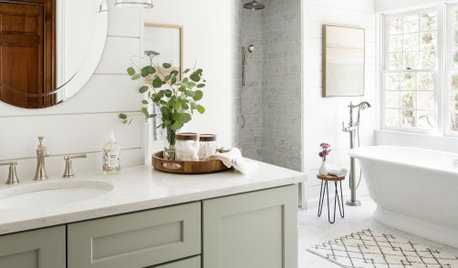
BATHROOM DESIGN14 Design Tips to Know Before Remodeling Your Bathroom
Learn a few tried and true design tricks to prevent headaches during your next bathroom project
Full Story
LIFEThe Top 5 Ways to Save Water at Home
Get on the fast track to preserving a valuable resource and saving money too with these smart, effective strategies
Full Story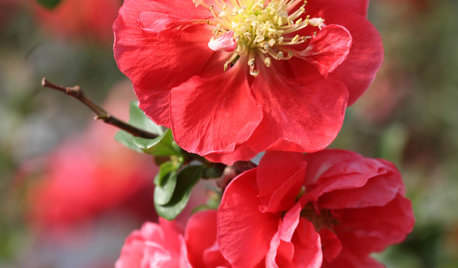
WINTER GARDENINGCalifornia Gardener's January Checklist
Winter-defying blooms and pruning saws earn a cheer, while California-focused gardening design books get a well-deserved shout-out
Full Story


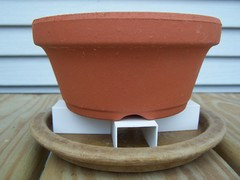

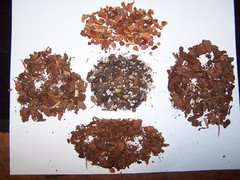


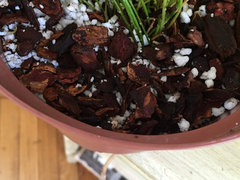



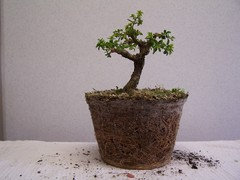
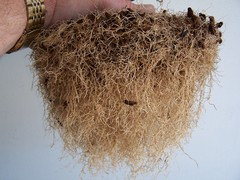
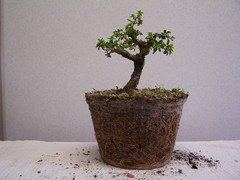





tapla (mid-Michigan, USDA z5b-6a)